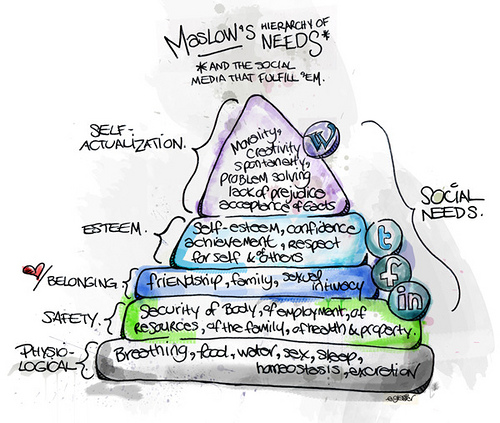I love writing and yoga, but for many years I just couldn’t seem to get it together to establish a daily practice for either, until I discovered yin yoga. Overnight, my yoga practice was transformed. Later, I watched long-distance swimmer Diana Nyad on Ted talk about achieving her lifetime goal aged 64 years, after she adopted her mantra: Find a way. It was then that I decided that I could find a way to a daily writing practice too.
Following the advice of Rachel Aaron’s 2K to 10K a day and Monica Loelle’s Write Better, Faster, I set up a spreadsheet and then, for six weeks, I tracked everything I wrote whilst noting down my location, my mood, what I was writing, how I was writing, and this is what I found worked for me:
Have an audience
The minute I started the spreadsheet, I had begun to watch myself, so I had created an audience. And with that came the need to add numbers to my spreadsheet. It was the same when I experimented with going to the library or a coffee shop. I had made such an effort to get my things together, get there, and then set it up, that I was that person working. Even if where I was got really loud and I was distracted, I would force myself to finish what I had set out to do.
Some writers on Twitter use the hashtag #amwriting. I haven’t tried it yet but it is quite nice to say out loud: I am writing, I want to finish this. NaNoWriMo, every November, encourages Twitter writing sprints, which can be both motivational and provide writing company, to encourage everyone to finish their 50,000 words.
Have a plan
If I was to keep another spreadsheet I would not allow myself to count the words I put in my journal. This is because I found that I would write away merrily, first thing on a morning, coffee to hand, and could rattle off 3k in under an hour, which was amazing, but then I would down tools once it had gone in the spreadsheet, as it felt like I had done my work for the day. I was producing words, but not finished writing.
When I kept a blog about my daughter being born with kidney failure, we had a lot to do each day with all the medical stuff. Often, people would ask me how I managed to be so prolific, but I found that writing it all down at the end of each day, didn’t take too long. It was cathartic and easy to do because I lived it and knew exactly what I was going to write. And, rather like the blogging I do now, it helped me make sense of things. That blog also had a specific audience of people who were expecting a new post, so that helped me get on, focus, and finish.
Knowing what to write when starting something new is a great way to avoid the blank page. Now, before I begin anything, especially a blog, I plan it out for at least 20 minutes. I then have something to type in and a structure to follow, and so I don’t waste time wondering where to start.
The other thing that helps me is having an external deadline. This ensures I have planned what I am going to say, how long I need to say it, and when I have to say it by.
Have a timer
I installed a timer on the bottom of my screen and set it to 20 minutes. This stopped a lot of the daydreaming and also ensured I was motivated to get writing as I had a break to look forward to at the end of each session. This approach gives me lots of words at the end of a day of sessions. A 20 minutes stint gives me around 1,000 words, which all make more sense than I thought possible and helps me get down a first blog draft quickly.
I can’t yet fit editing into the 20 minute-sprints. I have tried longer sessions but ended up noodling about. Editing and writing are very different skills. Perhaps, next time I will do an editing spreadsheet, as each time I edited work to make it better, I would fret about the lack of words in the spreadsheet, which is interesting, as I had nothing to proof to anyone except myself, but then taming your inner lizard is a life’s work.
Have a break
Writing this blog today has been very quick but that is because I have followed the three Haves above. I have had:
- An audience: Mainly myself because I found it fascinating to track myself and my inner lizard can take note and criticise me later with this new found knowledge.
- A plan: Partly because I took notes when I was tracking and journalled about it, so I didn’t need to research or think about it.
- A timer: I put the timer on because I wanted to make sure I finished this today. Sometimes, if I have been thinking about something for too long I have to fight the urge to feel that because I know what I think about it, I don’t need to write it up.
There have been days, however, even with the above three things, I have been unable to finish a blog or another piece of writing in the time I have set. And now thanks to the spreadsheet, I can see where I have banged my head against a piece of work to get it finished when I would have been better off just leaving it and giving myself a holiday, even a busman’s holiday, and writing something else.
Taking time to reflect on what I want to say seems to be part of my process, especially when writing a blog. My blogs on Sherry Turkle’s theory that social media is changing us and Maslow’s hierarchy of social media took a couple of weeks of thought. No timers, deadlines, or audiences could have changed that. First of all because I had a different opinion from anything else I had read anywhere else on these topics. And secondly, I didn’t even know what my opinion was until I gave myself permission to ruminate. So, I spent some time drinking coffee whilst thinking about these topics and reading around, and taking notes, before I was able to plan them out. And even then they didn’t go the way I had planned, because for me, writing is the surest way of getting clear about what I think.
Have a good time
Sometimes when I have spent a couple of weeks wondering what I am trying say, followed by saying it. I post it online and wonder why I put so much effort in. I blog because I like to and that is enough.
Today, I installed the Organize Series plugin for WordPress**. I have found that, once I begin a blog and post it, later I go back and want to add more, and so a series is quite a nice thing to do. Next on my list – after another blog on embodiment – are my old HCI lectures, which are a less old and more relevant today than I believed. Aside from what I believe though, they will be fun to write up.
And this is the most important rule I am now living by when writing fast and slow: Have a good time whether you are getting results or not, because having fun is what it is all about.
** I had to disactivate this plugin as it ate all my resources and gave me a 508 error! More investigation needed as having links to my series was very nice.






I found just adding a manual link at the top and bottom of the page for any multi-part article made it easier for readers to navigate and after a bit of trial and error, find that easy and simple to do.
For anything longer than 3 parts i add a manual complete link list to skip to any part if reading out of order (landing on page from search engine for example.
As well as having “part x of 4”. As i often read old online articles online both of my own and other folks, and this method makes reading flow rather than a headache of multiple browser tabs and having to search google to find the other parts etc.
Hi John, great minds!! Yes, I find a part x of 4 and a manual list with no and a descriptive word works best for me – had to laugh I too spend a lot of time rereading my own blogs…I guess that is why we write them to find out what we think 😉